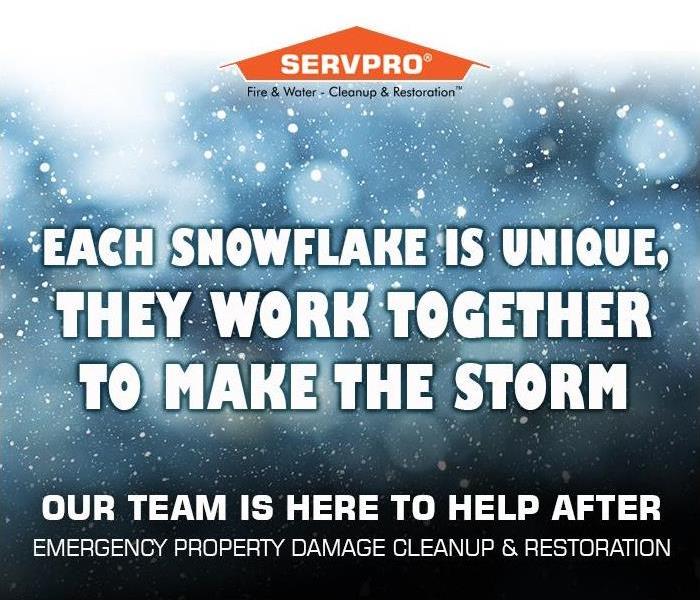Winter Storms Can Cause More Damage Than You Think!
12/13/2021 (Permalink)
You might think that storms are only common during hurricane season or the rainy months. This isn't the case because storm events can happen in the winter. Polar vortex and ice storms cause major damages each year to homes and businesses because of frozen pipes. Frozen pipes that burst can cause water damage quickly and can be tricky to clean up due to the freezing temperatures.
You might know already how to prevent frozen pipes. If not, please take a moment to review this site. However, have you ever thought about how to thaw a frozen pipe?
How to Thaw Frozen Pipes
If you turn on a faucet and only a trickle comes out, you may well have a frozen pipe. “If you suspect the pipes are frozen, be careful when thawing them out because if the pipe has already burst, the water will come flowing out and flood your home,” says John Galeotafiore, who oversees Consumer Reports’ testing of home products and power gear.
If a pipe has broken, turn off the water at the main shutoff valve, which is usually at the water meter or where the main line enters the house. If the water is still running and no pipes have burst, you can take the following steps. (Of course, if you suspect a more serious problem, call a plumber.)
Turn on the faucet. As you heat the frozen pipe and the ice plug begins to melt, you want the water to be able to flow through. Running water through the pipe, as cold as it is, will help melt ice in the pipe.
Apply heat to the section of pipe using an electric heating pad wrapped around the pipe, an electric hair dryer, or a portable space heater (kept away from flammable materials), or by wrapping pipes with towels soaked in hot water. As tempting as it may be, do not use a blowtorch, a kerosene or propane heater, a charcoal stove, or any device with an open flame; the high heat can damage the pipes or even start a fire.
Apply heat until full water pressure is restored. Check all other faucets in your home to see whether you have additional frozen pipes. If one pipe freezes, others may freeze, too.
Don't forget to CALL SERVPRO so we can assist in the cleanup from a frozen pipe.






 24/7 Emergency Service
24/7 Emergency Service
